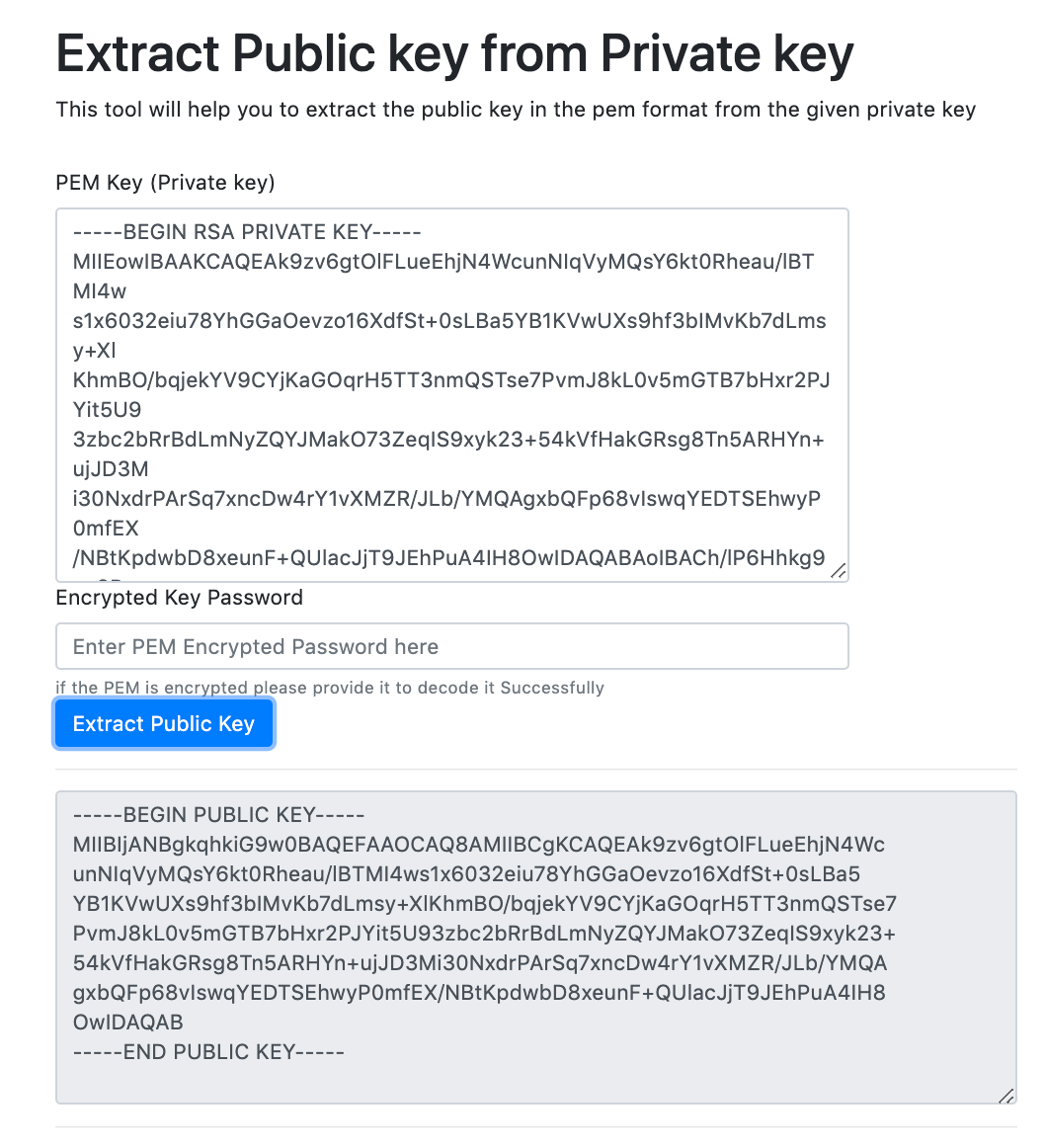Openssl Generate Pem And Private Key
- Openssl Generate Private Key Pem
- Openssl Generate Pem And Private Keys
- Openssl Generate Pem And Private Key Mac
- Openssl Generate Public Private Key
One of the most versatile SSL tools is OpenSSL which is an open source implementation of the SSL protocol. There are versions of OpenSSL for nearly every platform, including Windows, Linux, and Mac OS X. OpenSSL is commonly used to create the CSR and private key.
- Just as a.crt file is in.pem format, a.key file is also stored in.pem format. Assuming that the cert is the only thing in the.crt file (there may be root certs in there), you can just change the name to.pem. The same goes for a.key file. Which means of course that you can rename the.pem file to.key.
- Follow the procedure below to extract separate certificate and private key files from the.pfx file. Take the file you exported (e.g. Certname.pfx) and copy it to a system where you have OpenSSL installed. Note: the.pfx file is in PKCS#12 format and includes both the certificate and the private key.
- As this is a self-signed certificate there is no CA and you can safely ignore the warning and proceed. Should you want to get a real certificate that will be recognizable by anyone on the public Internet then the procedure is below. Generate a private key; Use that private key to create a CSR file; Submit CSR to CA (Verisign or others, etc.).
- Again, you will be prompted for the PKCS#12 file’s password. As before, you can encrypt the private key by removing the -nodes flag from the command and/or add -nocerts or -nokeys to output only the private key or certificates. So, to generate a private key file, we can use this command: openssl pkcs12 -in INFILE.p12 -out OUTFILE.key -nodes.
- How to create a PEM file with the help of an automated script: Download NetIQ Cool Tool OpenSSL-Toolkit. Select Create Certificates PEM with key and entire trust chain. Provide the full path to the directory containing the certificate files. Provide the filenames of the following: private key.
Common OpenSSL Commands with Keys and Certificates
Generate RSA private key with certificate in a single command
Generate Certificate Signing Request (CSR) from private key with passphrase
Generate RSA private key (2048 bit)
Generate a Certificate Signing Request (CSR)
Generate RSA private key (2048 bit) and a Certificate Signing Request (CSR) with a single command
Convert private key to PEM format
Generate a self-signed certificate that is valid for a year with sha256 hash
View details of a RSA private key
View details of a CSR
View details of a Certificate
View details of a Certificate in DER format
Convert a DER file (.crt .cer .der) to PEM

Openssl Generate Private Key Pem
Convert a PEM file to DER
When you are working with JAVA applications and JAVA based server, you may need to configure a Java key store (JKS) file. Self signed keystore can be easily created with keytool command. But if you have a private key and a CA signedcertificate of it, You can not create a key store with just one keytool command.
You need to go through following to get it done.

Openssl Generate Pem And Private Keys
Step 1. Create PKCS 12 file using your private key and CA signed certificate of it. You can use openssl command for this.
If your private key has a password, It would promote to enter the password of private key. You need to define a password for PKCS 12 file as well.
As an example, say i have a private key called “server.pem” and certificate with “servercret.pem”
Openssl Generate Pem And Private Key Mac
Step 2. Create JKS file using keytool command
Created PKCS 12 file has been given as the source keystore and new file name (wso2carbon.jks) has been given as the destination keystore.
Openssl Generate Public Private Key
As an example,
As an additional steps, you can change the private key password of the created JKS file and also the alias name for your private key entry.
Step 3 (Optional). Changing the password of private key file in keystore. More details from here as well
Step 4 (Optional). Change the alias name of the private key entry
/avatar-the-game-activation-key-generator.html. By default [current alias] is set to “1”
Thanks for reading…!!! Also you can find more details on creating self signed KeyStore from here